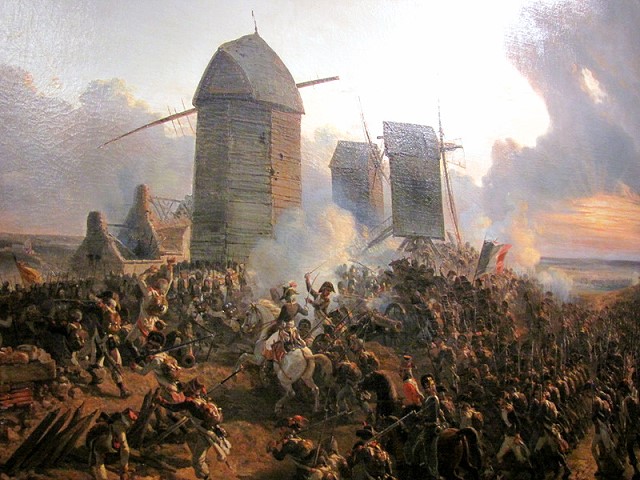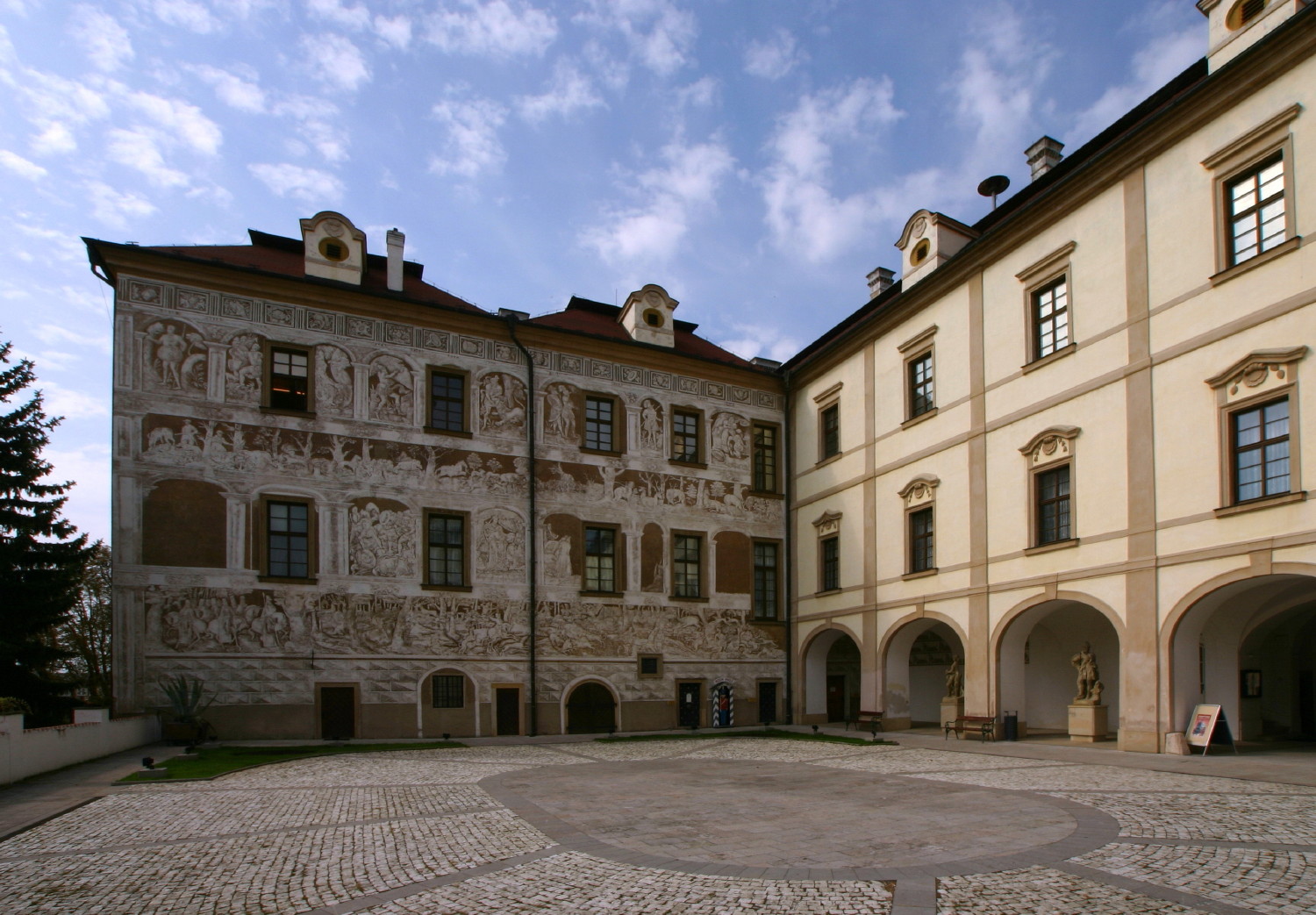|
Ludwig, Baron Of Terzi
Ludwig, Baron von Terzy (1730–1800) was an Austrian General. He served in the War of Bavarian Succession, with particular distinction in one of its few actions of the war. In January 1779, his commander, Dagobert Sigmund von Wurmser advanced into the County of Glatz in five columns, two of which, commanded by Major General Franz Joseph, Count Kinsky, surrounded Habelschwerdt on 17–18 January. While one column secured the approach, the other, under the leadership of Colonel Pallavicini,This officer was probably Colonel, later Count, Carlo Pallavicini, of the House of Pallavicini, who had been in Habsburg service since the latter days of the Seven Years War. Erik Lund. ''War for the every day: generals, knowledge and warfare in early modern Europe.'' Westport, Ct: Greenwood Press, 1999, , p. 152. stormed the village and captured the Prince of Hessen-Philippsthal and 700 men, three cannon and seven colors. Wurmser himself led the third column in an assault on the so-ca ... [...More Info...] [...Related Items...] OR: [Wikipedia] [Google] [Baidu] |
Johann Baptist Lampi Ludwig Freiherr Von Terzi
Johann, typically a male given name, is the German form of ''Iohannes'', which is the Latin form of the Greek name ''Iōánnēs'' (), itself derived from Hebrew name ''Yochanan'' () in turn from its extended form (), meaning "Yahweh is Gracious" or "Yahweh is Merciful". Its English language equivalent is John. It is uncommon as a surname. People People with the name Johann include: Mononym *Johann, Count of Cleves (died 1368), nobleman of the Holy Roman Empire *Johann, Count of Leiningen-Dagsburg-Falkenburg (1662–1698), German nobleman *Johann, Prince of Hohenzollern-Sigmaringen (1578–1638), German nobleman A–K * Johann Adam Hiller (1728–1804), German composer * Johann Adam Reincken (1643–1722), Dutch/German organist * Johann Adam Remele (died 1740), German court painter * Johann Adolf I, Duke of Saxe-Weissenfels (1649–1697) * Johann Adolph Hasse (1699-1783), German Composer * Johann Altfuldisch (1911—1947), German Nazi SS concentration camp officer executed for wa ... [...More Info...] [...Related Items...] OR: [Wikipedia] [Google] [Baidu] |
War Of Bavarian Succession
The War of the Bavarian Succession (; 3 July 1778 – 13 May 1779) was a dispute between the Austrian Habsburg monarchy and an alliance of Saxony and Prussia over succession to the Electorate of Bavaria after the extinction of the Bavarian branch of the House of Wittelsbach. The Habsburgs sought to acquire Bavaria, and the alliance opposed them, favoring another branch of the Wittelsbachs. Both sides mobilized large armies, but the only fighting in the war was a few minor skirmishes. However, thousands of soldiers died from disease and starvation, earning the conflict the name ''Kartoffelkrieg'' (Potato War) in Prussia and Saxony; in Habsburg Austria, it was sometimes called the ''Zwetschgenrummel'' (Plum Fuss). On 30 December 1777, Maximilian Joseph, the last of the junior line of Wittelsbach, died of smallpox, leaving no children. Charles IV Theodore, a scion of a senior branch of the House of Wittelsbach, held the closest claim of kinship, but he also had no legitimate chi ... [...More Info...] [...Related Items...] OR: [Wikipedia] [Google] [Baidu] |
Dagobert Sigmund Von Wurmser
Dagobert Sigismund, Count von Wurmser (7 May 1724 – 22 August 1797) was an Habsburg monarchy, Austrian field marshal during the French Revolutionary Wars. Although he fought in the Seven Years' War, the War of the Bavarian Succession, and mounted several successful campaigns in the Rhineland in the initial years of the French Revolutionary Wars, he is probably most remembered for his unsuccessful operations against Napoleon Bonaparte during the 1796 campaign in Italy. Although initially in the Army of France during the Seven Years' War, Wurmser left France after Louis reached a peace agreement with Britain, and joined the military of the House of Habsburg. He later took part in the short-lived War of the Bavarian Succession, also called the so-called ''Kartoffelkrieg'' (Potato War). During the French Revolutionary Wars, Wurmser commanded several imperial Habsburg armies on in the Rhine River valley between 1793 and 1795, and perhaps his most conspicuous achievement was the takin ... [...More Info...] [...Related Items...] OR: [Wikipedia] [Google] [Baidu] |
County Of Kladsko
The County of Kladsko ( cs, Kladské hrabství, german: Grafschaft Glatz, pl, Hrabstwo kłodzkie) was a historical administrative unit within Bohemia as a part of the Kingdom of Bohemia and later in the Kingdom of Prussia with its capital at Kłodzko (Kladsko) on the Nysa river. The territory comprises the Kłodzko Land with the Kłodzko Valley in center within the Sudetes mountain range and roughly corresponds with the present-day Kłodzko County in the Polish Lower Silesian Voivodeship. History Beginnings The area has been populated at least since the 1st century BC. The earliest mention of the town itself is in the 12th century ''Chronica Boëmorum'' by Cosmas of Prague. He mentions the town of ''Cladzco'' as belonging to the Bohemian nobleman Slavník in 981, father of Bishop Adalbert of Prague and progenitor of the Slavník dynasty. Bohemian-Polish Borderland Held by the Přemyslid dukes of Bohemia, the town was also claimed by the Polish kings, which led to a series o ... [...More Info...] [...Related Items...] OR: [Wikipedia] [Google] [Baidu] |
Franz Joseph, Count Kinsky
Franz Joseph, Count Kinsky of Wchinitz and Tettau (6 December 1739 – 9 June 1805) was a Habsburg Austrian general in the War of the Bavarian Succession and the French Revolutionary Wars. A nobleman from the House of Kinsky, he began his military service in 1759 and within ten years he commanded an infantry regiment. Ahead of his time, he began a school in his regiment to train officer cadets. As a general officer he led troops in a successful action against Prussia in 1778. A year later he was appointed Inhaber of an infantry regiment and Director of the Theresian Military Academy in Wiener Neustadt; he held both posts during the remainder of his life. In the Flanders Campaign in 1794, he commanded an infantry division against the French. He led an attack column at Tourcoing where he failed to support Prince Frederick, Duke of York and Albany. He was promoted to Feldzeugmeister in September 1794. He held no more active commands and died at Vienna in 1805. Early career Franz Josep ... [...More Info...] [...Related Items...] OR: [Wikipedia] [Google] [Baidu] |
Pallavicini
The House of Pallavicini, also known as Pallavicino and formerly known as Pelavicino, is an ancient Italian noble family founded by Oberto II ''Pelavicino'' of the Frankish Obertenghi family. The Pallavicini of Genoa The first recorded member of the Pallavicini family was Oberto I (died 1148). The first Pallavicino fief was created by Oberto II, who received it from Holy Roman Emperor Frederick Barbarossa in 1162. A number of lines are descended from Guglielmo (died 1217), possessor of a series of fiefs between Parma and Piacenza. The Pallavicini of the Latin Empire Through the descendants of Guy and his brother Rubino, sons of Guglielmo, a branch of the family rose to prominence in the Latin Empire founded after the Fourth Crusade in 1204. They governed the Margraviate of Bodonitsa from 1204 to 1358. They grew in riches and, after 1224, became also the most powerful family in the former Kingdom of Thessalonica (northern Greece). The first margraves were of Guy's line until h ... [...More Info...] [...Related Items...] OR: [Wikipedia] [Google] [Baidu] |
Szalejów Górny
Szalejów Górny is a village in the administrative district of Gmina Kłodzko, within Kłodzko County, Lower Silesian Voivodeship, in south-western Poland. It lies approximately west of Kłodzko, and south-west of the regional capital Wrocław Wrocław (; german: Breslau, or . ; Silesian German: ''Brassel'') is a city in southwestern Poland and the largest city in the historical region of Silesia. It lies on the banks of the River Oder in the Silesian Lowlands of Central Europe, rou .... References Villages in Kłodzko County {{Kłodzko-geo-stub ... [...More Info...] [...Related Items...] OR: [Wikipedia] [Google] [Baidu] |
Howitzer
A howitzer () is a long- ranged weapon, falling between a cannon (also known as an artillery gun in the United States), which fires shells at flat trajectories, and a mortar, which fires at high angles of ascent and descent. Howitzers, like other artillery equipment, are usually organized in a group called a battery. Howitzers, together with long-barreled guns, mortars, and rocket artillery, are the four basic types of modern artillery. Mortars fire at angles of elevation greater than 45°, and are useful for mountain warfare because the projectile could go over obstacles. Cannons fire at low angles of elevation (<45°), and the projectile lands much faster at its target than it would in the case of a mortar. But the cannon is not useful if there is an obstacle like a hill/wall in front of its target. Etymology The English word ''howitzer'' comes from the Czech word , from , 'crowd', and is in turn a borrowing from the Middle High German word or (mode ...[...More Info...] [...Related Items...] OR: [Wikipedia] [Google] [Baidu] |
War Of The First Coalition
The War of the First Coalition (french: Guerre de la Première Coalition) was a set of wars that several European powers fought between 1792 and 1797 initially against the Kingdom of France (1791-92), constitutional Kingdom of France and then the French First Republic, French Republic that succeeded it. They were only loosely allied and fought without much apparent coordination or agreement; each power had its eye on a different part of France it wanted to appropriate after a French defeat, which never occurred. Noah Shusterman – ''De Franse Revolutie (The French Revolution).'' Veen Media, Amsterdam, 2015. (Translation of: ''The French Revolution. Faith, Desire, and Politics.'' Routledge, London/New York, 2014.) Chapter 7 (p. 271–312) : The federalist revolts, the Vendée and the beginning of the Terror (summer–fall 1793). Relations between the French revolutionaries and neighbouring monarchies had deteriorated following the Declaration of Pillnitz in August 1791. Eight mo ... [...More Info...] [...Related Items...] OR: [Wikipedia] [Google] [Baidu] |
Prince Josias Of Saxe-Coburg-Saalfeld
Prince Frederick Josias of Saxe-Coburg-Saalfeld (german: Friedrich Josias von Sachsen-Coburg-Saalfeld) (26 December 1737 – 26 February 1815) was an Austrian nobleman and military general. Biography Born at Schloß Ehrenburg in Coburg, he was the youngest son of Duke Francis Josias, Duke of Saxe-Coburg-Saalfeld and Princess Anna Sophie of Schwarzburg-Rudolstadt. He was the great-uncle of King Leopold I of Belgium (1790–1865); and the great-great-uncle of Queen Victoria of the United Kingdom (1819–1901). Military career Josias joined the Habsburg military as Colonel in 1759, participated in the Seven Years' War, and rose to the rank of Lieutenant Field Marshal by 1773. In the Russo-Turkish-Austrian war of 1788, he commanded an army corps under Freiherr von Laudon, occupying Moldavia, capturing Khotyn in Bessarabia and sharing in Aleksandr Suvorov's victory in the Battle of Focșani (1 August 1789). Having completely beaten the main Ottoman army under Grand Vizier Koca ... [...More Info...] [...Related Items...] OR: [Wikipedia] [Google] [Baidu] |
Johann Von Klenau
Johann Josef Cajetan Graf von Klenau, Freiherr von Janowitz ( cs, Jan hrabě z Klenové, svobodný pán z Janovic; 13 April 1758 – 6 October 1819) was a field marshal in the Habsburg army. Klenau, the son of a Bohemian noble, joined the Habsburg military as a teenager and fought in the War of Bavarian Succession against Prussia, Austria's wars with the Ottoman Empire, the French Revolutionary Wars, and the Napoleonic Wars, in which he commanded a corps in several important battles. In the early years of the French Revolutionary Wars, Klenau distinguished himself at the Wissembourg lines, and led a battle-winning charge at Handschuhsheim in 1795. As commander of the Coalition's left flank in the Adige campaign in northern Italy in 1799, he was instrumental in isolating the French-held fortresses on the Po River by organizing and supporting a peasant uprising in the countryside. Afterward, Klenau became the youngest lieutenant field marshal in the history of the Habsburg ... [...More Info...] [...Related Items...] OR: [Wikipedia] [Google] [Baidu] |


.jpg)



